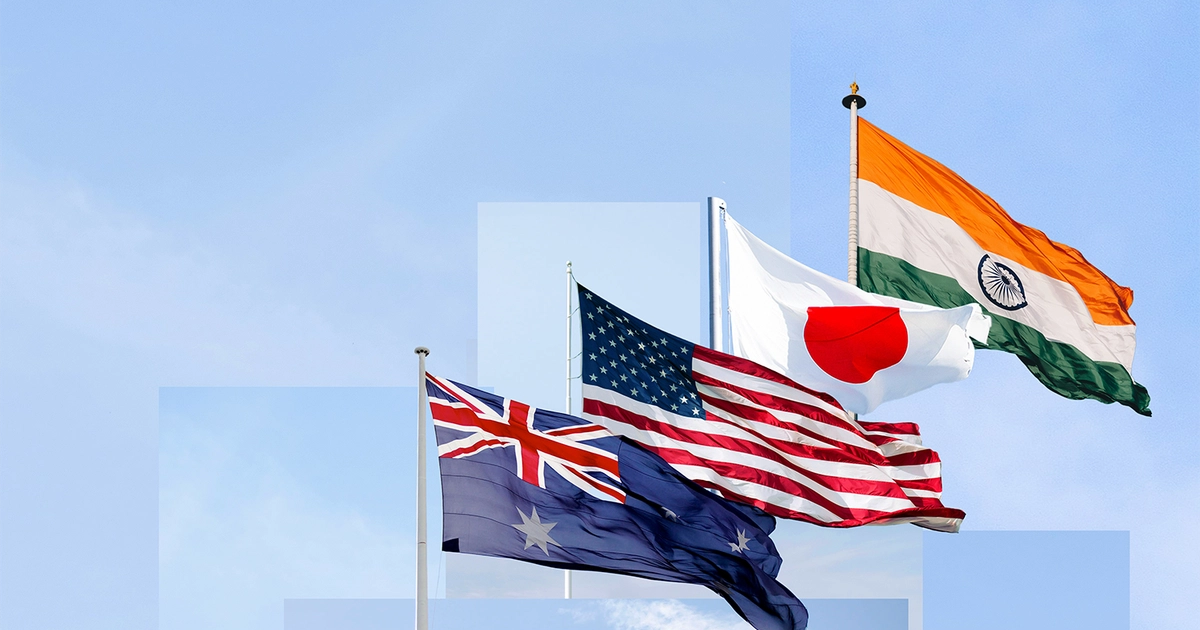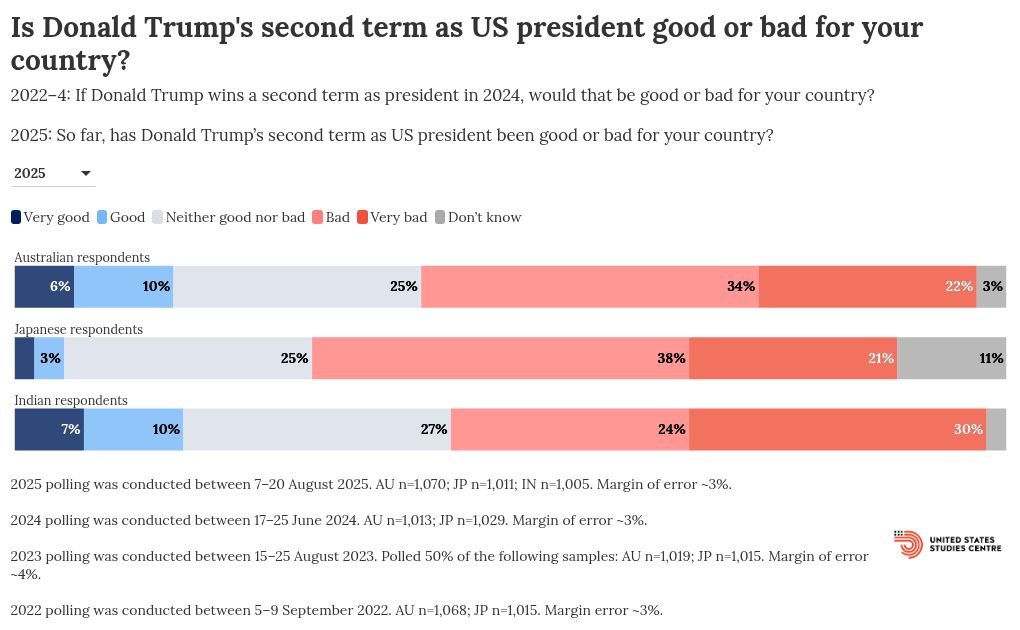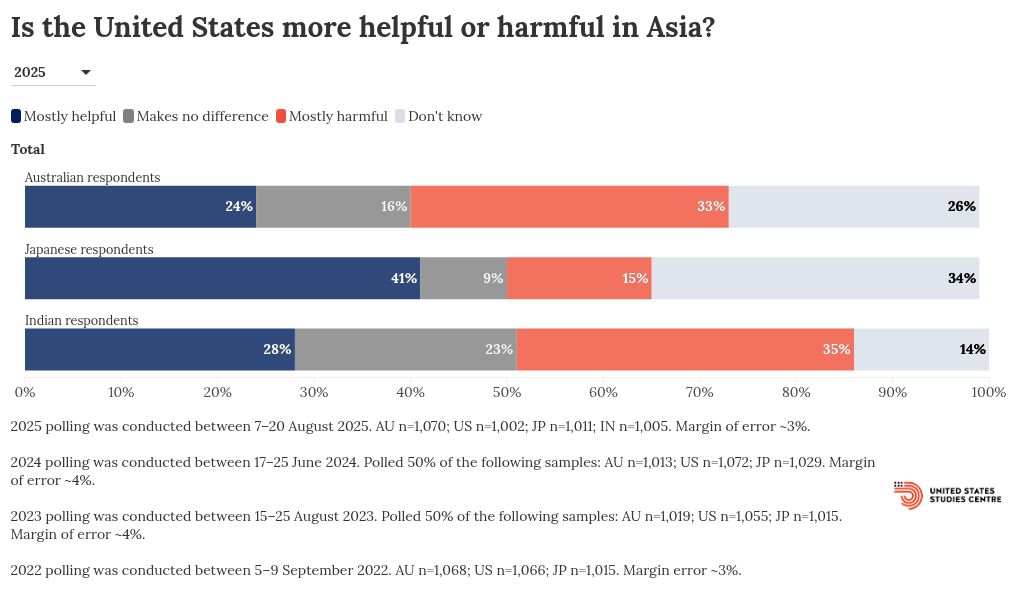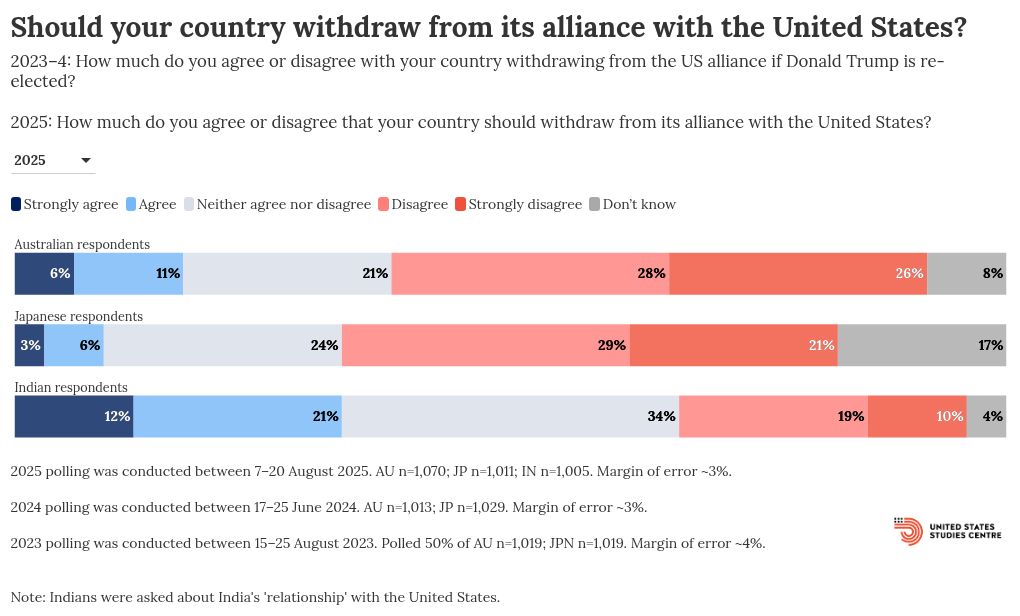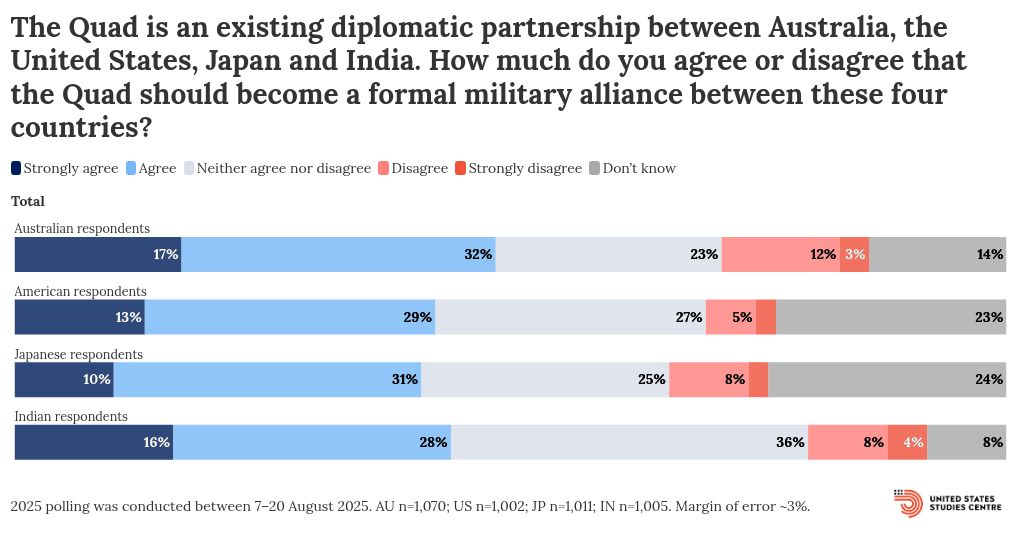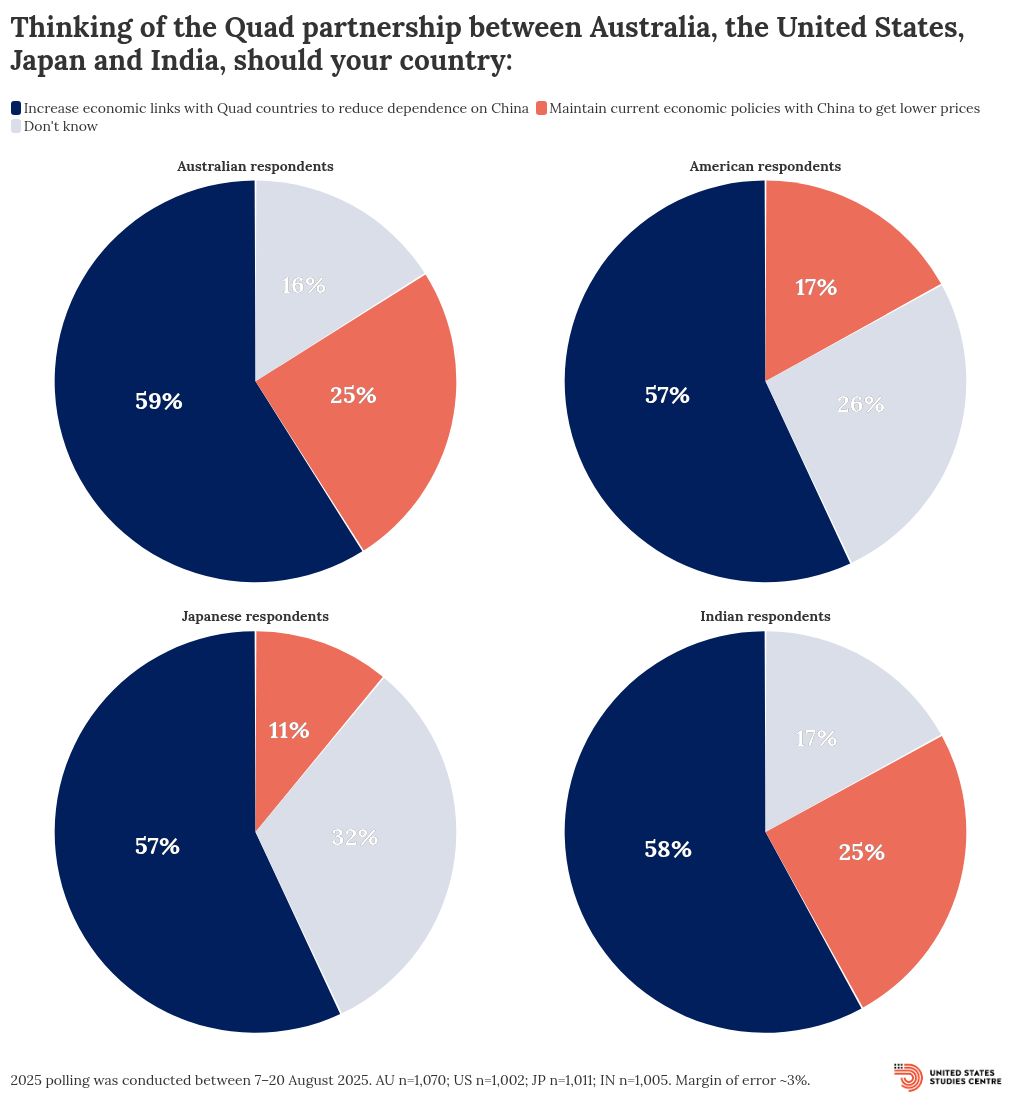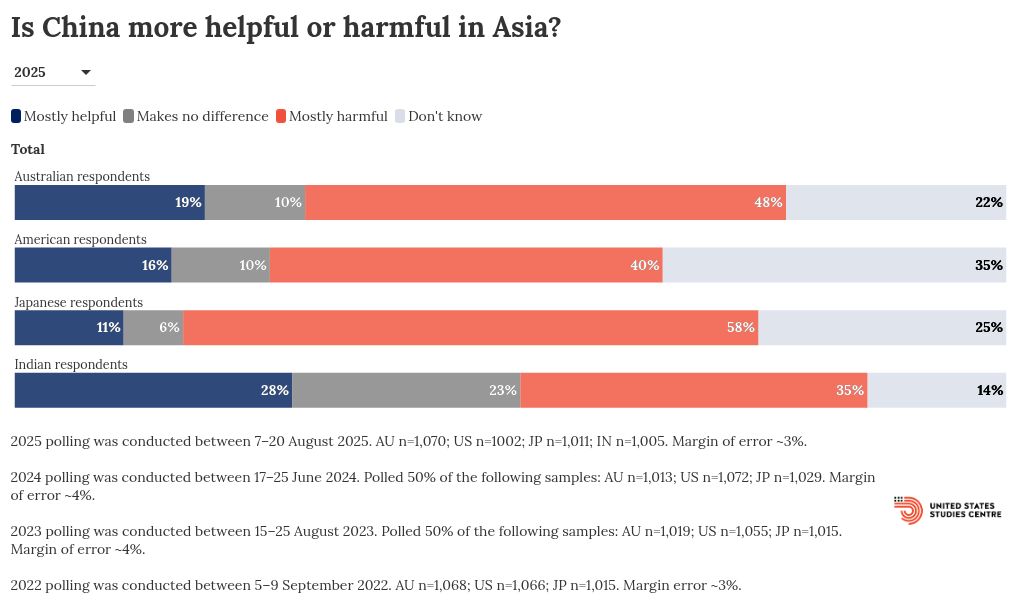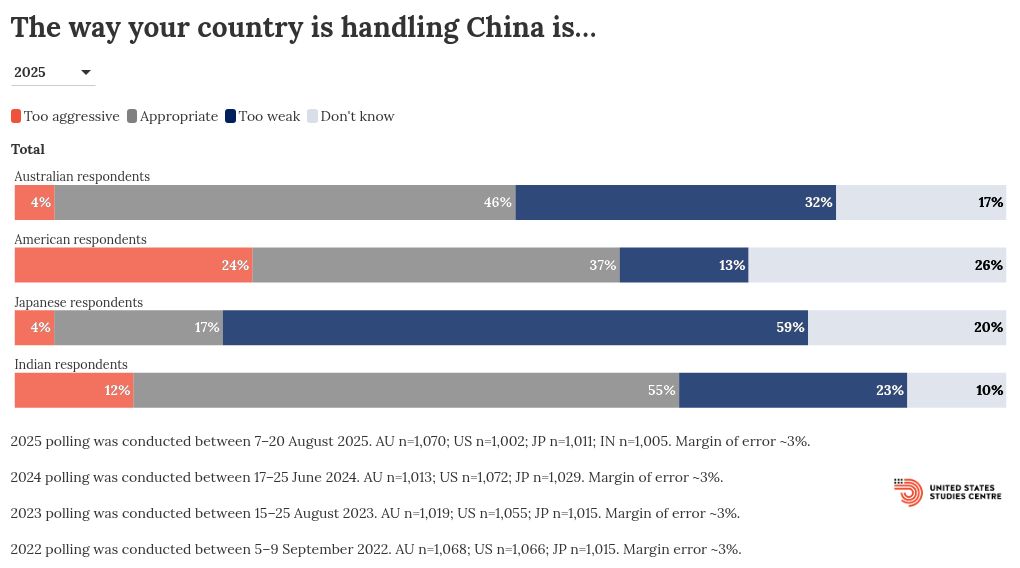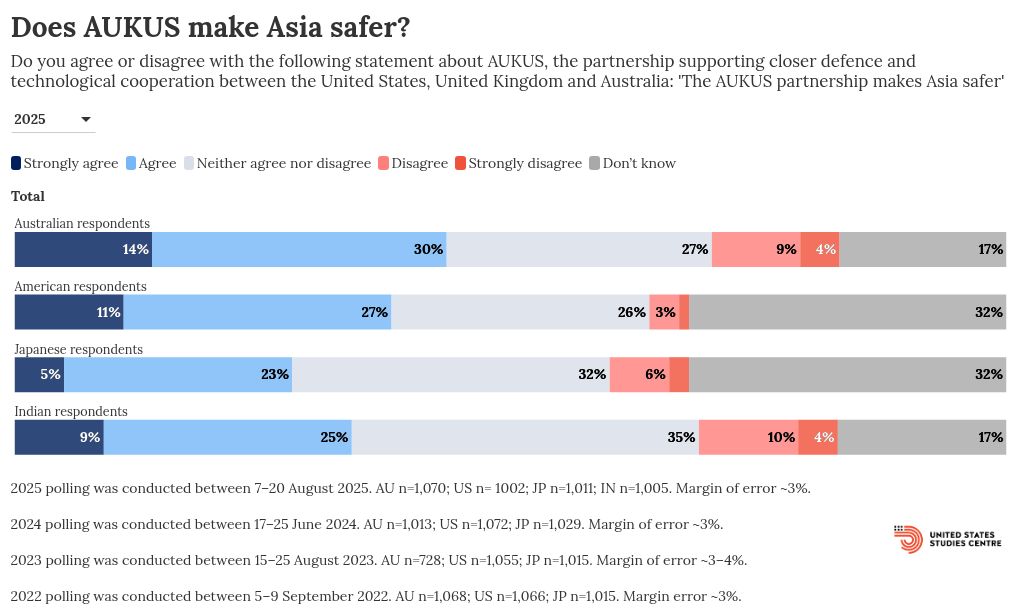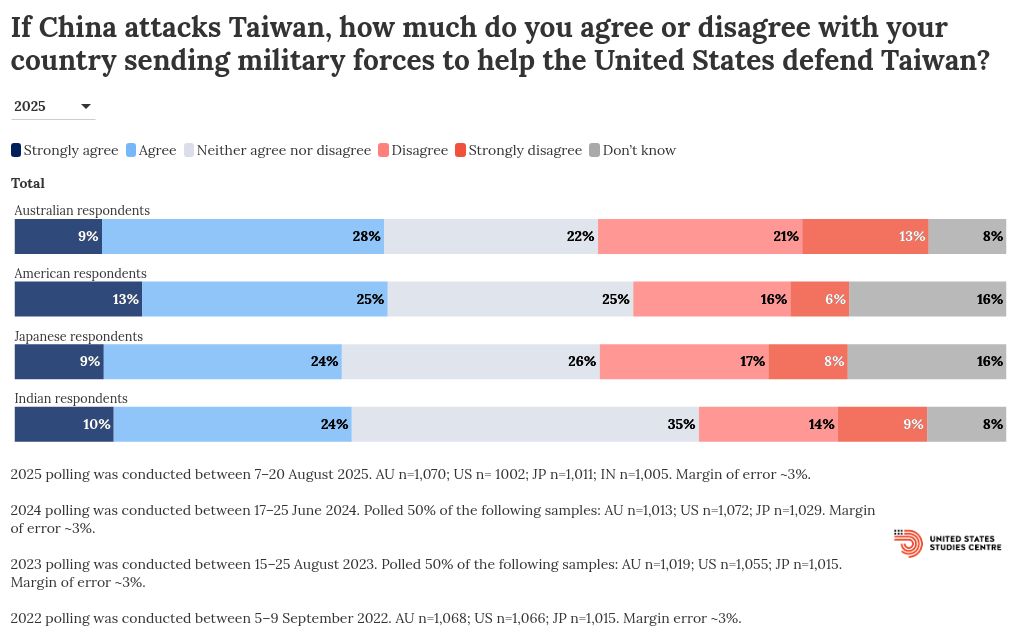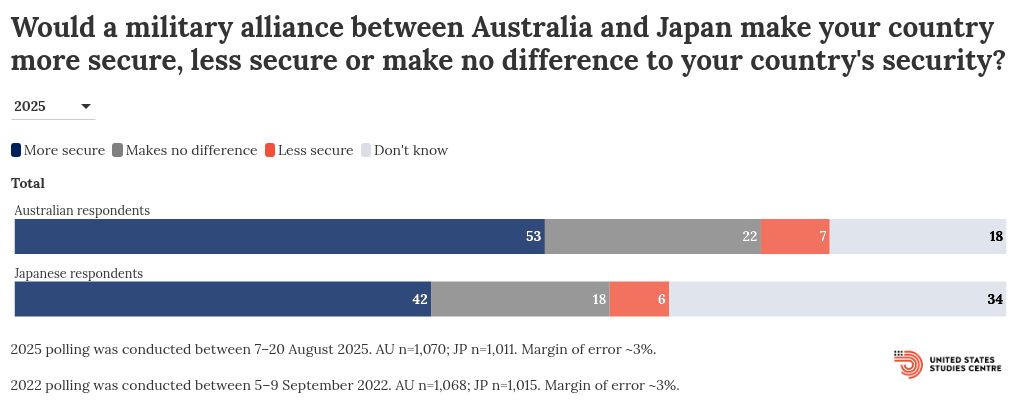Despite anxiety about Trump, Asia’s maritime democracies are increasingly aligned on security
This week is highly consequential for US allies and partners in the Indo-Pacific. Following Australian Prime Minister Anthony Albanese’s successful official visit to Washington, President Trump has embarked on his first trip to Asia since returning to office. While details remain uncertain, the president’s itinerary is anticipated to include a flurry of engagements in Malaysia, Japan, and South Korea — with the possibility of a bilateral meeting with Chinese President Xi Jinping in South Korea. The visit comes at a time when the contours of the Trump administration’s Asia policy are yet to be clearly defined.
Against this backdrop, the United States Studies Centre (USSC) in August 2025 polled over 1,000 citizens across Australia, the United States, Japan and India on their views of key issues shaping the Indo-Pacific region. Below are ten key takeaways which provide a snapshot of how citizens in the Quad countries perceive the strategic environment, China’s role — and each other — during a time of rising geopolitical tension. This precedes the release of the USSC’s full Allies and Partners Poll next month.
1. Australian, Japanese and Indian respondents hold negative views about Trump 2.0
A majority of Australian (56%), Japanese (59%), and Indian (54%) respondents think that Trump’s second term has been bad for their countries.
2. Japanese citizens continue to hold more positive views of the US role in Asia than Australians and Indian respondents
Australians are now more likely to see the United States as harmful rather than helpful in Asia. This sentiment is shared by Indian respondents — 35% say the United States is mostly harmful compared to 28% who say mostly helpful. By contrast, few Japanese (15%) respondents think the United States is mostly harmful in Asia, with a plurality (41%) viewing it as mostly helpful.
3. Australian and Japanese respondents want to stick with their US alliances
Only 17% of Australians and 9% of Japanese respondents want to withdraw from their respective US alliances. The majority of respondents in Australia (54%) and Japan (50%) disagree with doing so.
4. Significant pluralities in all four countries support a formal Quad military alliance
Respondents in the four countries are far more likely to agree than disagree with the Quad becoming a formal military alliance. Australians are the most supportive (49% agree), followed by Indians (44%), Americans (42%) and Japanese respondents (41%).
Yet, while only a small number of respondents in each country oppose the Quad becoming a formal military alliance (7–15%), many either say they don’t know or neither agree nor disagree (37%–50%).
5. All four Quad countries want to deepen economic ties
Only a quarter or fewer of respondents in each country oppose increasing economic links between the Quad countries to reduce dependence on China. The vast majority of Australian (59%), American (57%), Japanese (57%) and Indian (58%) respondents support doing so.
6. Negative perceptions of China persist among Australians, Americans and Japanese respondents — while Indians are more divided
Australians (48%), Americans (40%) and Japanese respondents (58%) remain more likely to view China as harmful rather than helpful in Asia — while Indians are divided (35% say harmful compared to 28% who say helpful).
By comparison, 33% of Australians, 18% of Americans, 15% of Japanese and 35% of Indians say that the United States is more harmful in Asia.
7. Six in ten Japanese respondents think their government’s handling of China is too weak
Japanese respondents are the most likely to say that their country’s handling of China is too weak (59% agree) — roughly 30 points higher than the citizens in the other Quad countries. A minority of Australians and Japanese (4% in each country) say their country’s handling of China is too aggressive, while there has been a 9 point increase in Australians saying their government’s handling of China is appropriate.
8. Citizens in the Quad countries are more likely to say that the AUKUS partnership makes Asia safer
Only 13% of Australians, 8% of Japanese respondents and 4% of Americans think that AUKUS makes Asia less safe.
While the majority of American (58%), Japanese (64%) and Indian (52%) respondents say they don’t know or are undecided, nine times as many Americans, three times as many Japanese respondents and twice as many Indians agree that the partnership makes Asia safer compared to those who disagree.
9. Support for sending military forces in the event of an attack on Taiwan outweighs opposition in all Quad countries
Citizens in the Quad countries are more likely to support sending military forces to help the United States in the event of an attack on Taiwan compared to those who disagree.
Over a third of Indians (34%) support sending military forces to help the United States defend Taiwan in the event of an attack, compared to only 23% who disagree with doing so, while the rest either say they are neutral or don’t know (43%).
10. Japanese and Australian respondents remain positive about the idea of a formal military alliance
A plurality of Australian (53%) and Japanese (42%) respondents continues to think a bilateral military alliance would make their countries more secure — though support has declined by 7 percentage points among both publics since this question was last asked in 2022. Very few respondents in Australia (7%) and Japan (6%) think it would make their country less secure.
Methodology
The polling data in this publication was derived from a survey conducted between 7 August and 20 August 2025 by YouGov, on behalf of the United States Studies Centre. The surveys were administered online to a representative sample of adult, citizen populations with sample sizes of 1,070 in Australia, 1,002 in the United States, 1,011 in Japan and 1,005 in India.
The survey builds on previous USSC surveys of representative Australian samples in June 2024, August 2023, and September 2022. Unless otherwise mentioned, the margin of error is approximately 3%.

